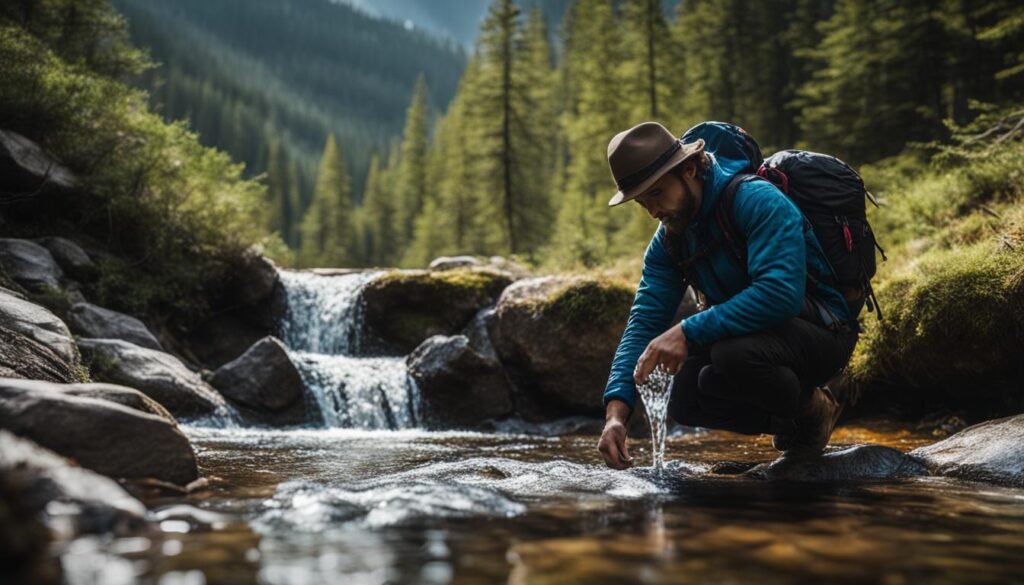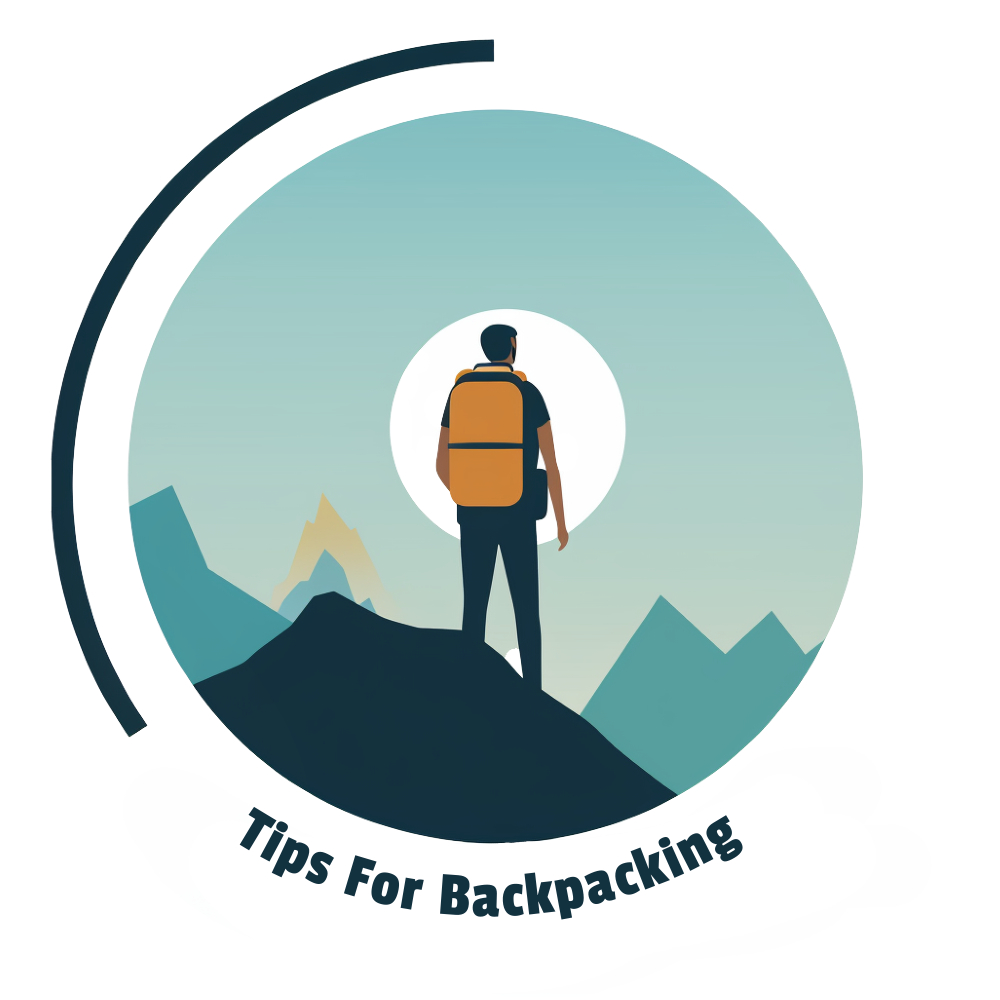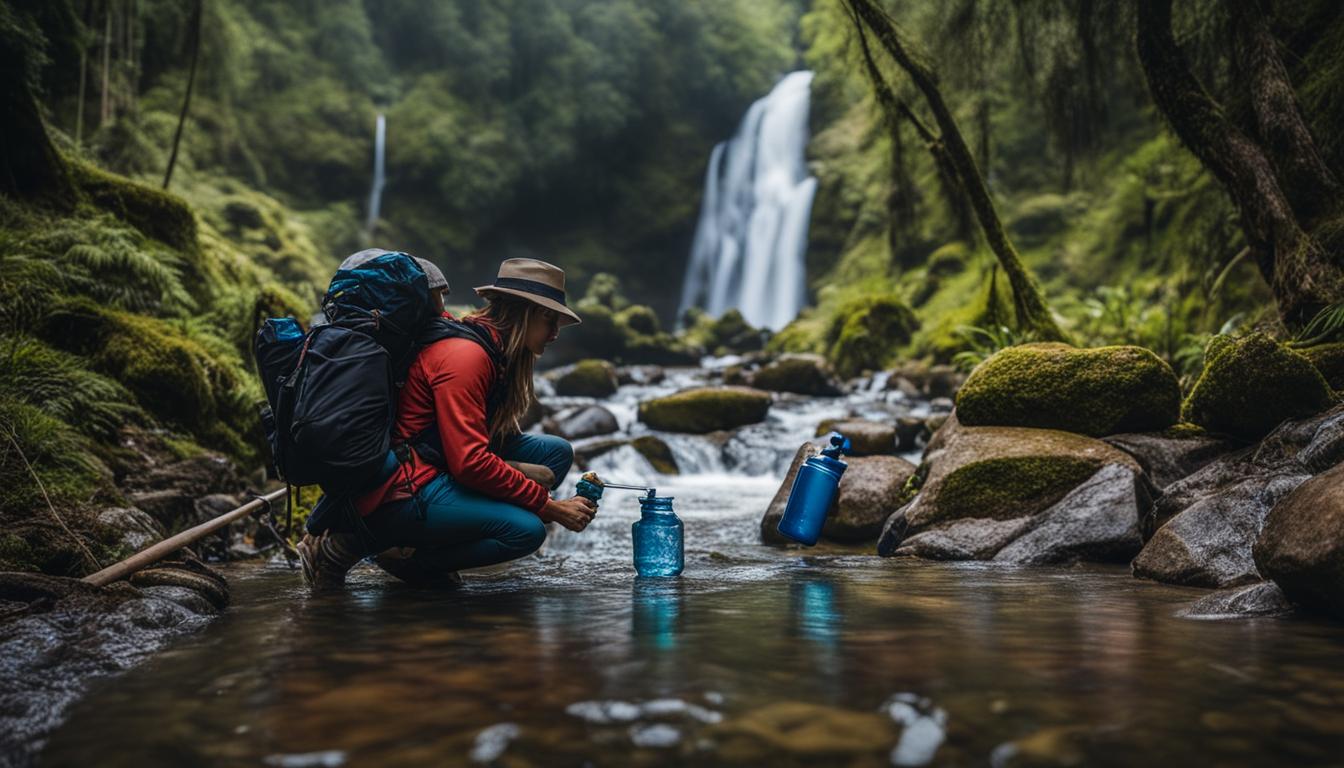Hey there, fellow adventurers! Today, I want to share some essential tips on emergency water sourcing for backpackers like you. When you’re out exploring the great outdoors, staying hydrated is crucial for your well-being. But finding clean and safe water sources can be a challenge, especially in remote areas. So, let’s dive in and discover some handy backpacking water purification techniques and how to find water while backpacking.
Key Takeaways:
- Carry enough water with you and have a means to treat water from natural sources.
- Topographic maps, guidebooks, online hiking forums, and local authorities can help you find reliable water sources on the trail.
- Consider the seasonality of water sources and plan your route accordingly.
- Boiling, filtration, and chemical treatment are effective methods for water purification.
- Follow the manufacturer’s instructions for each treatment method and explore emergency water storage solutions.
Finding Water Sources on the Trail

When embarking on outdoor adventures, ensuring a safe drinking water supply is essential for backpackers. Finding reliable water sources along the trail can be challenging but crucial for hydration and overall well-being. Leaning on various resources to gather information on water availability is key to a successful backpacking trip.
One reliable source of information is topographic maps, as they often indicate potential water sources such as rivers, creeks, lakes, and springs. These maps can be obtained online or in physical form, providing essential details for route-planning and water source identification. Guidebooks and online hiking forums are also valuable resources, offering firsthand experiences and recommendations from fellow backpackers.
It’s important to consider the seasonality of water sources, as availability may vary throughout the year. Some sources may only be present during certain seasons or after heavy rainfall. Therefore, pre-trip research and understanding the local conditions can help anticipate potential challenges and plan accordingly. Route-planning should also take into account the proximity of water sources to ensure regular replenishment of the water supply.
Backup Water Treatment Methods
While locating water sources is crucial, backpackers should also be equipped with reliable water filtration systems to ensure the safety of their drinking water. Filtration systems with effective pore sizes can remove harmful bacteria, parasites, and other contaminants. It’s important to choose a system appropriate for outdoor use and to consult customer reviews and expert recommendations for the most effective options.
Additionally, it’s wise to carry backup water treatment methods in case the primary filtration system fails or is not suitable for the available water sources. Boiling water is a tried and tested method that kills all pathogens when water is brought to a rolling boil for at least a minute. Chemical treatments, such as using iodine or chlorine tablets, can also be effective in killing bacteria and viruses. Ultraviolet light treatment and alternative systems like MIOX® can provide additional options for backpackers to ensure their water is safe to drink.
Being well-prepared and knowledgeable about finding water sources and treating water is essential for backpackers to have a safe and enjoyable outdoor experience. Water is a vital resource, and understanding its availability and how to make it safe for consumption is crucial for every adventurer to thrive in the great outdoors.
Table: Water Source Finding Resources
| Resource | Description |
|---|---|
| Topographic maps | Indicate potential water sources like rivers, creeks, lakes, and springs |
| Guidebooks | Provide firsthand experiences and recommendations from fellow backpackers |
| Online hiking forums | Offer valuable insights and advice from experienced backpackers |
| Local authorities | Can provide up-to-date information on water sources based on current conditions |
How Can Backpackers Safely Source Emergency Water in the Wilderness?
Backpackers can find safe water sources for backpackers in the wilderness by locating flowing streams, rivers, or lakes. They can also use a portable water filter or purification tablets to make water safe for drinking. It’s important to always have a backup plan for sourcing safe water while exploring the great outdoors.
Water Treatment Methods for Backpackers
When it comes to clean water options for backpackers, having portable water filtration systems and emergency water storage solutions is essential. As an avid backpacker, I understand the importance of having access to safe drinking water while on outdoor adventures. Here are some water treatment methods that every backpacker should know.
Boiling
Boiling water is a reliable and effective method to ensure water is free from pathogens. Simply bring water to a rolling boil for at least a minute to kill all bacteria, parasites, and viruses. Boiling is a simple yet powerful way to make water safe to drink.
Filtration
Portable water filtration systems are a popular choice among backpackers. These systems use different pore sizes to strain out pathogens, ensuring clean drinking water. There are various options available, ranging from lightweight and compact filters to more robust filtration systems that can handle larger volumes of water.
Chemical Treatment
In situations where boiling or filtration may not be feasible, chemical treatment can be an effective backup method. Using iodine or chlorine tablets can kill bacteria and viruses, making the water safe to drink. It is important to follow the manufacturer’s instructions and wait the recommended contact time before consuming the treated water.
Emergency Water Storage
Having emergency water storage solutions is crucial for backpackers. It’s always wise to carry extra water, but in case of unforeseen circumstances, having a backup plan is essential. Consider investing in collapsible water storage containers or water bladders that can be easily packed and filled when needed.
As a responsible backpacker, it is our responsibility to prioritize clean water options. By being prepared with portable water filtration systems, understanding different water treatment methods, and having emergency water storage solutions, we can ensure our hydration needs are met, even in the most challenging situations.

